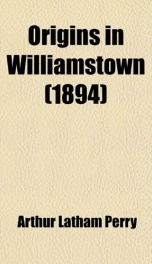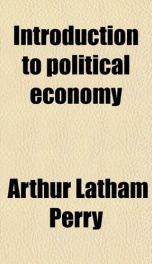elements of political economy

Purchase of this book includes free trial access to www.million-books.com where you can read more than a million books for free. This is an OCR edition with typos. Excerpt from book: CHAPTER IIL ON VALUE. If I take up a new lead-pencil from ray table, for the purpose of examining all its qualities, I shall immediately perceive those which are visible and tangible. The pencil has length, a cylindrical form, a black color, is hard to the touch, is composed of wood and plumbago in certain relations to each other, and has the quality, when sharpened at the end, of making black marks upon white paper. These qualities, and such as these, may be learned by a study of the pencil itself. But can I learn, by a study of the pencil itself, the value of the pencil? Is value a quality ? By any examination of its mechanical, or by any analysis of its chemical properties, can I detect how much the pencil is worth? No. The questioning of the senses, however minute, the test of the laboratory, however delicate, applied to the pencil alone can never determine how much it is worth. These methods will discover the qualities that belong to the pencil as such, but I must take another method altogether to determine its value. Will the origin of the word Value help in finding a method by which I may discover the value of the pencil ? The word is derived from the Latin verb Valero, to pass for, to be worth. There is a hint ofa comparison in the original meaning of the terra itself. Will the current use of language assist me any further in finding out the way to learn the value of my pencil ? In current language, when the value of anything is asked, the answer always comes in the terms of something else. We ask, How much is it worth? The answer is, so many cents or dollars. . f . The cents or dollars are very different things from l the things whose value we inquire after;- and thus ' we see again more clearly that value implies a comparison of two distinct things; and, if so,...
Users who have this book
Users who want this book
What readers are saying
What do you think? Write your own comment on this book!
write a commentif you like elements of political economy try:
Do you want to exchange books? It’s EASY!
Get registered and find other users who want to give their favourite books to good hands!




